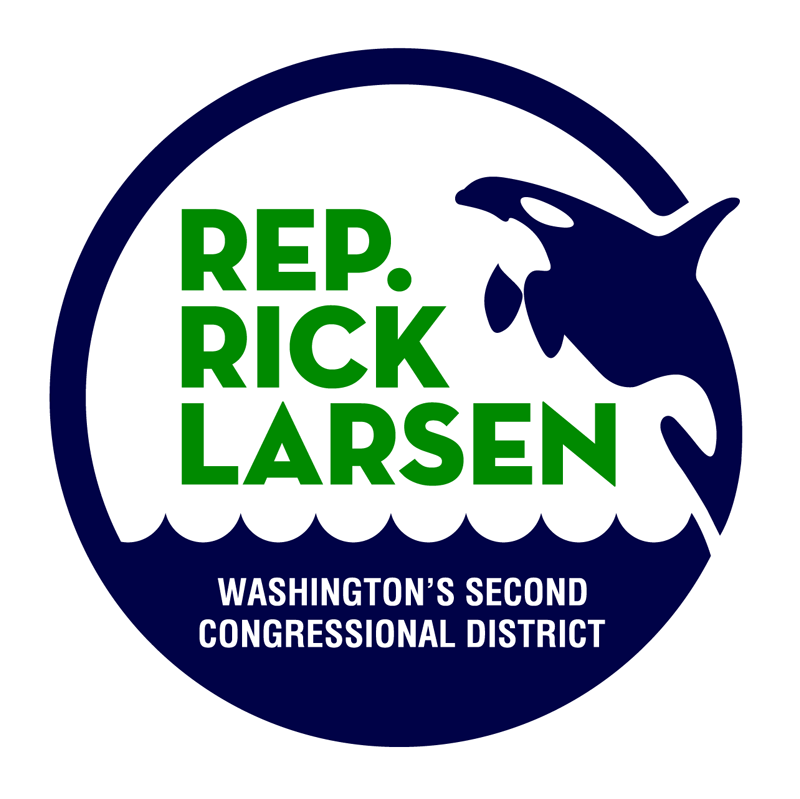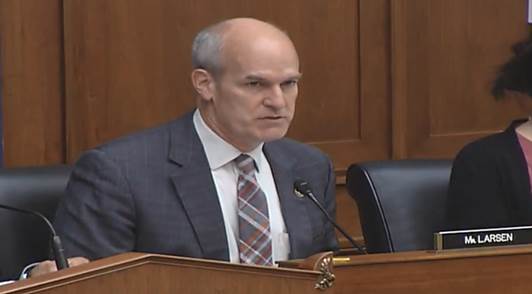Press Releases
Remarks by Congressman Larsen at Commercial Space Transportaion Hearing
Washington, DC,
June 26, 2018
Remarks by Congressman Rick Larsen Aviation Subcommittee Hearing “Commercial Space Transportation Regulatory Reform: Stakeholder Perspectives” June 26, 2018
Thank you Chairman LoBiondo for calling today’s hearing on commercial space transportation. It has been two years since the Subcommittee convened a hearing on commercial space. Since that time, the U.S. has experienced tremendous growth and innovation in the industry. The economic footprint of this segment of the aerospace industry is significant. According to the Federal Aviation Administration (FAA), the U.S. space industry represents about $158 billion, which is just shy of half of the global space economy estimated at $345 billion, according to 2016 figures. The U.S. is not alone, however. It is not the only nation making significant advances in commercial space. Last year, I visited the Paris Air Show, where the role of commercial space itself was prevalent as well. Companies across Europe represented at the Show appeared to be thriving. And New Zealand itself is developing its own space industry. So it is critical that we ensure that the U.S. and its companies remain competitive on the international stage in commercial space, just as they have in traditional aviation for decades. Commercial space transportation has opened the door to a wide host of new applications for satellite services and space research. Some companies are inching closer to providing personal spaceflight. So, this is not only exciting from a national perspective, but from a local one as well. This growth supports more than 200,000 aerospace jobs across the nation. Notably, more than 136,000 folks who make up the aerospace workforce call Washington state home. According to the Bureau of Labor Statistics, Washington state employs aerospace engineers at 5.7 times the national average and has the highest density of aerospace engineers in the U.S. Snohomish County, which is part of the district I represent, is home to the state’s second-largest concentration of aerospace jobs, with more than 43,000, nearly 44,000 in aerospace manufacturing. According to our state’s Department of Commerce, more than three dozen space-related companies are part of Washington state’s space cluster, including companies represented here today like Blue Origin, SpaceX, Spaceflight Industries, Boeing and of course many others. Pioneering, innovative research and development in the state is driven by two world-class universities, a national research lab and groundbreaking R&D teams. In addition we have companies that are NASA suppliers as well for the Orion, Starliner and SpaceX BFR spacecraft. So, we’ve got a lot riding on commercial space in Washington state. And before I go further I do want to take the opportunity to introduce one of our witnesses, Audrey Powers, who is here today to represent Blue Origin in Kent, Washington. Blue Origin supports a growing ecosystem of commercial space suppliers in manufacturing and services in our state, and our country and the world. So I’d like to say welcome to Ms. Powers. FAA reports launch licenses are in an upward trend, and are expected to continue over the next decade. Since the first FAA-licensed launch in 89, there have been 278 licensed commercial space launches. Nearly one-quarter of these have occurred in the last five years alone. In fact, a record 23 FAA-licensed launches occurred last year. It is also vital for national security for this segment of the aerospace industry to remain strong and competitive. The promise of commercial space is endless. But safety still must remain the number one priority. The President has directed the FAA to overhaul its launch license and re-entry regulations in an aggressive one-year timeframe. We have heard from some stakeholders that FAA’s regulations were drafted 25 years ago and are in fact in desperate need of a re-write. But, we have also heard from folks who caution safety might be compromised if the FAA is forced to “streamline” its regulatory framework in just 12 months. It was just four months ago this Subcommittee convened to discuss the state of aviation safety. I mentioned then, and it bears repeating now, the U.S. has the safest aviation system in the world. Any effort to reform regulations must not rollback safety requirements. We have to keep in mind that more than 2.5 million passengers fly through U.S. airspace each day. With an increasing number of spaceports and launches on the horizon, we have to ensure that our airspace remains safe. This Subcommittee’s job is to ensure the FAA has the authority and resources needed to make the system even safer. Maintaining our unparalleled safety through new integration into the system requires all aviation stakeholders be at the table. That said as well, I am pleased to have Captain Tim Canoll from ALPA here with us this morning to discuss the potential effects that this booming industry is having on existing legacy aviation users. I also hope to learn from our other witnesses why and what reforms the FAA's commercial space regulations are needed and whether there are concerns regarding the Administration's approach. It is too soon to know what the FAA will propose next year. While flexibility is necessary so the industry can continue to grow, I trust this Subcommittee will keep a close eye on any efforts that undercut safety. Again, Mr. Chairman, thank you so much, I look forward to hearing from our witnesses. And Mr. Chairman I would ask for unanimous consent that a white paper titled “Addressing the Challenges to Aviation from Evolving Space Transportation” prepared by airline pilots international be entered into the record. Congressman LoBiondo: Without objection, so ordered Congressman Larsen: Thank you Mr. Chairman ### |

